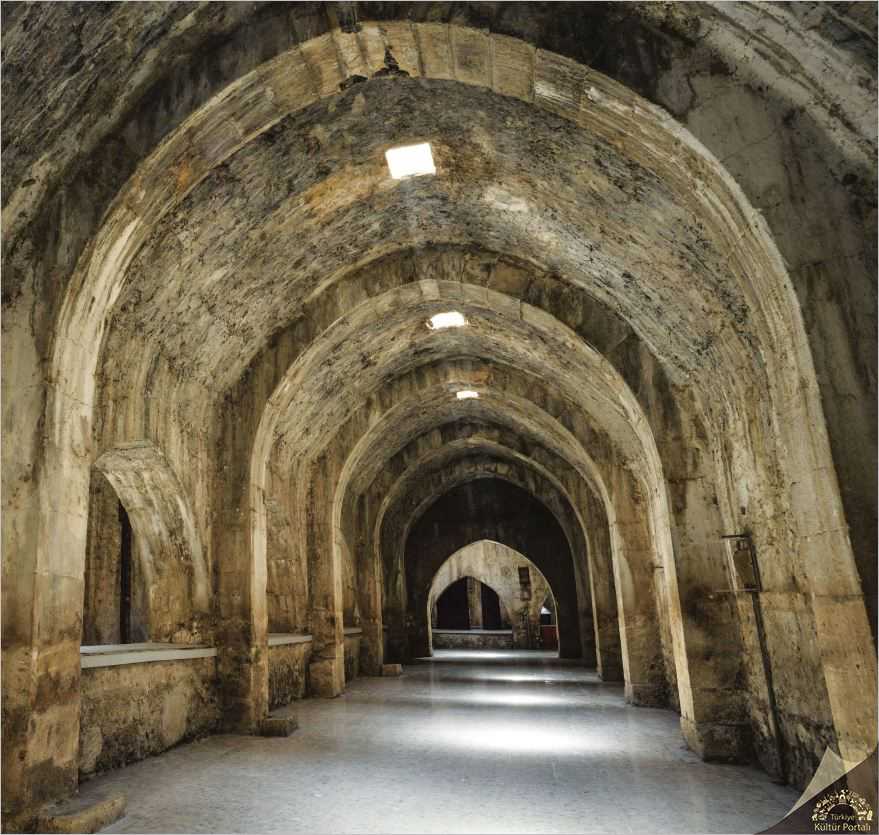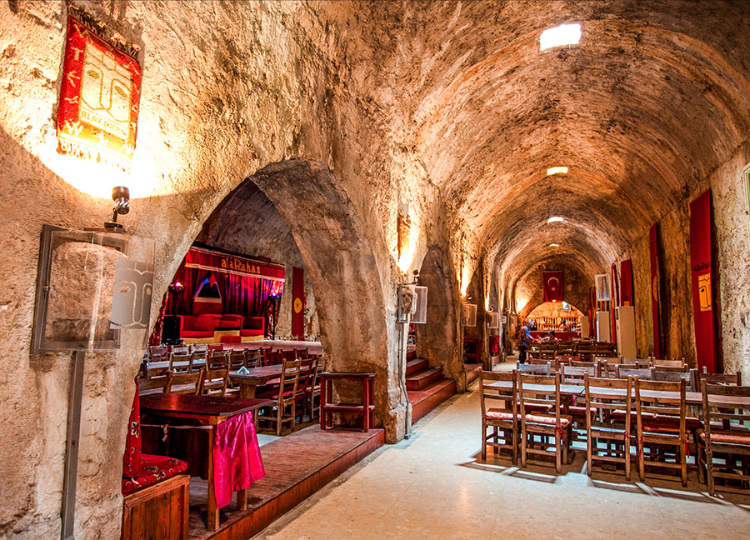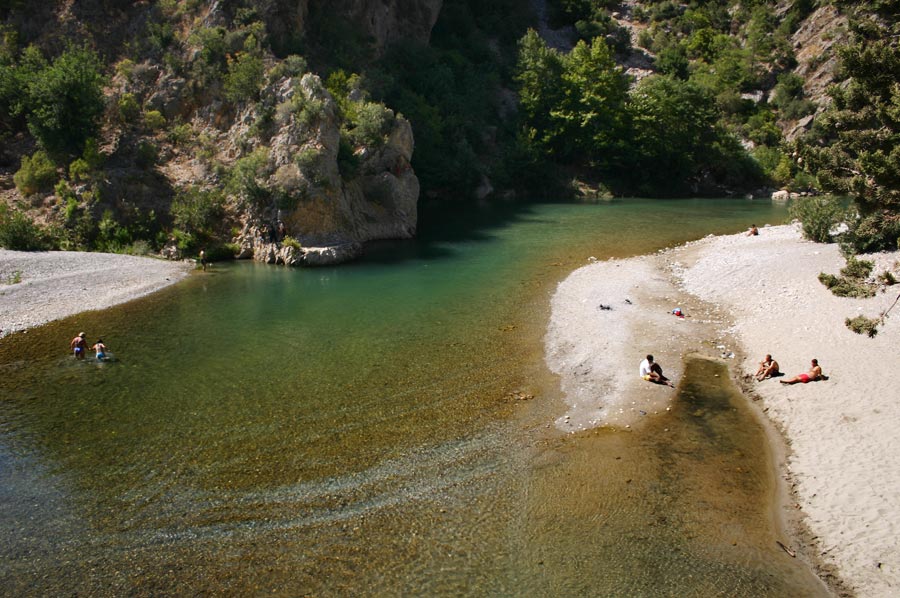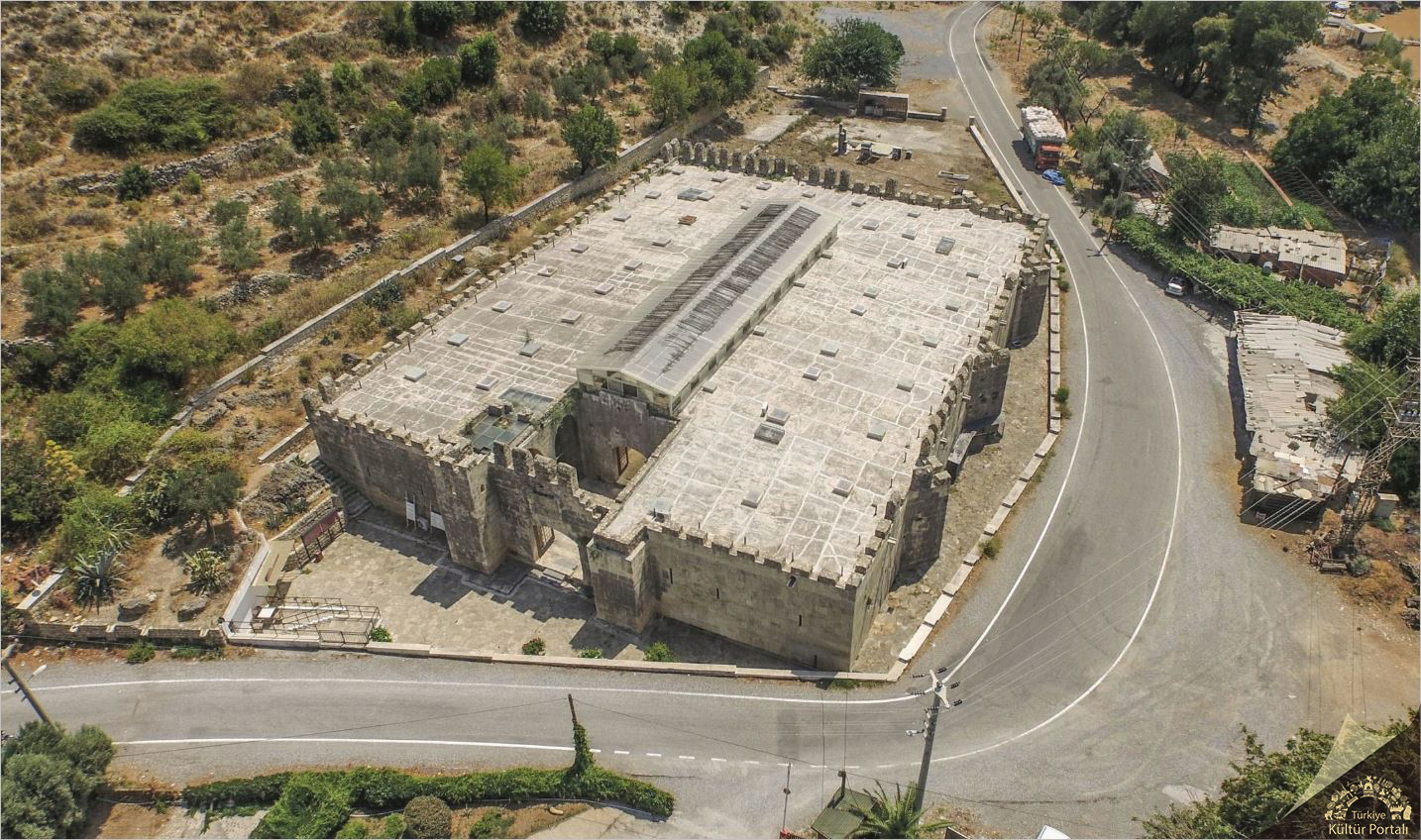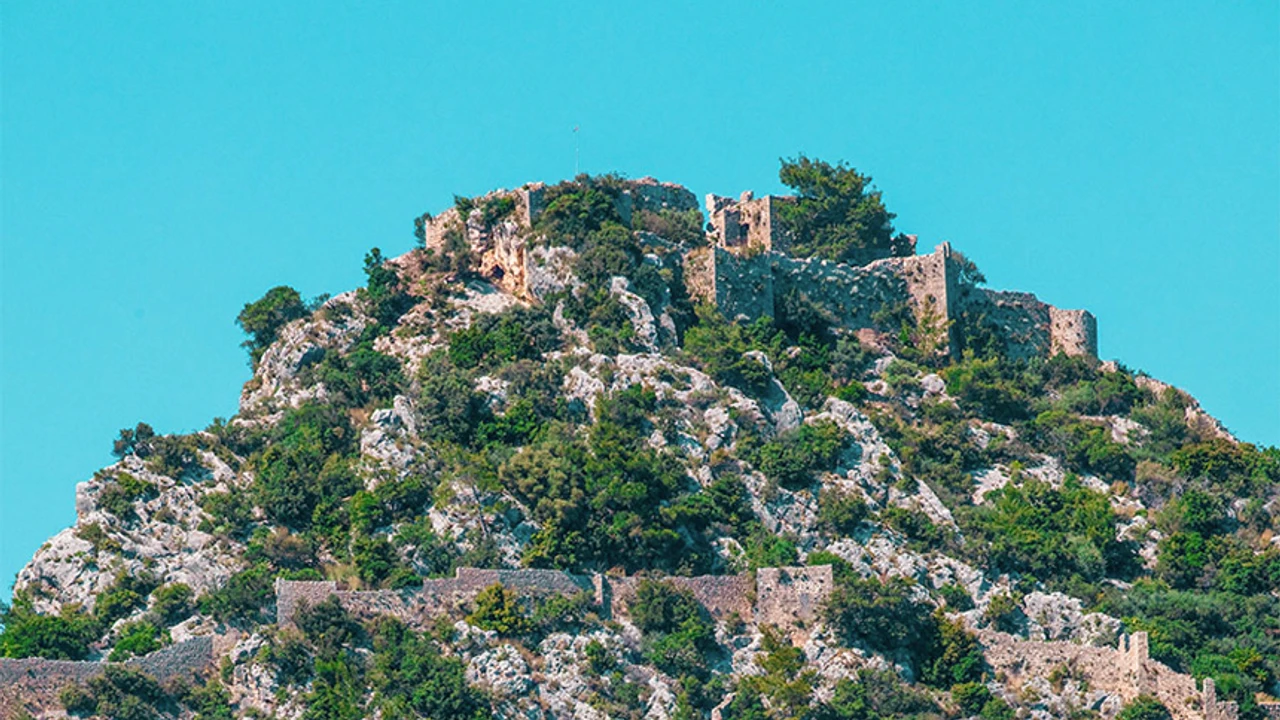- Landscape
- Whellchair Accessible
- Food and Beverage
- WC
- Free Entrance
Silk Road Rests here in Alanya
Nestled in the breathtaking Alara Valley just 37 kilometers from Alanya, Alara Han stands as Turkey's most famous and best-preserved Seljuk caravanserai, earning recognition on UNESCO's World Heritage Tentative List in 2009. Built in 1231 by the legendary Sultan Alaeddin Keykubad I -the same visionary ruler who conquered Alanya- this architectural masterpiece represents the pinnacle of medieval Islamic hospitality and engineering excellence.
Located along the historic Silk Road route connecting Konya to Alanya, Alara Han served as the crucial final stop for merchants and travelers before reaching the Mediterranean coast. The caravanserai's strategic position beside the fast-flowing Alara River, surrounded by dramatic Taurus Mountain scenery, creates one of Turkey's most spectacular historical settings where medieval architecture harmoniously blends with stunning natural beauty.
Unlike any other Seljuk caravanserai, Alara Han features a unique concentric design that may have been specifically created to serve the special needs of the sultan during his journeys between the capital Konya and his winter quarters in Alanya, making it a true "Sultan Han" of exceptional historical significance.
Sultan Alaeddin Keykubad's Architectural Vision
The Golden Age of Seljuk Architecture
Alara Han was commissioned during the reign of Sultan Alaeddin Keykubad I (1220-1237), the greatest of all Seljuk rulers who transformed the empire into the dominant power in medieval Anatolia. The inscription above the caravanserai entrance bears the construction date of 1231 and honors the sultan with the title "ruler of the lands," reflecting the imperial scope of this architectural project.
The sultan's building campaign along the Mediterranean coast was part of a comprehensive infrastructure development program designed to support the expanding trade networks that brought prosperity to the Seljuk Empire. Alara Han represents the perfect synthesis of practical functionality and artistic beauty that characterized the golden age of Seljuk architecture.
Strategic Location and Historical Context
The caravanserai was built at the mouth of the Alara River where it breaks free from the Taurus Mountains onto the alluvial plain, providing travelers with fresh water, dramatic scenery, and protection from mountain weather. This location made Alara Han the natural convergence point for trade routes coming from Central Anatolia toward the Mediterranean coast.
The proximity to Alara Castle, perched dramatically on an isolated rock crag above the han, created a defensive complex that protected both the trade route and the valuable cargo of passing merchants. The castle, previously Byzantine and later restored by Sultan Alaeddin Keykubad, demonstrates the comprehensive military and commercial planning that characterized Seljuk territorial control.
Concentric Planning and Royal Accommodations
Alara Han's most distinctive feature is its highly complicated concentric plan, unlike any other Seljuk caravanserai in Anatolia. Built on 2,000 square meters using carefully hewn limestone blocks with walls up to 2 meters thick, the structure demonstrates exceptional engineering and construction techniques that have preserved it for nearly 800 years.
The central corridor, originally open to the sky but now glazed, creates a unique spatial experience that differs dramatically from the typical courtyard-centered design of most caravanserais. This innovative layout suggests that Alara Han was designed to accommodate the special requirements of royal travelers and their extensive entourages.
Mysterious Decorative Elements and Symbolic Features
Alara Han features several mysterious elements that distinguish it from other medieval structures, including mason "runes" and the famous "crying" lion head decorations that have captured visitors' imaginations for centuries. According to local legend, these sorrowful-looking lion heads were designed to reflect the longing for home felt by travelers, supposedly smiling whenever a wanderer safely reached their destination.
The lion motif, frequently used in Seljuk architecture to symbolize state power, takes on deeper emotional resonance at Alara Han, where the decorative program seems designed to acknowledge both the grandeur of imperial authority and the human experience of medieval travel.
Religious and Service Facilities
The caravanserai includes a beautifully decorated mosque with elaborate stone carving that demonstrates the artistic mastery of Seljuk craftsmen. The mosque's architectural details and ornamental program rank among the finest examples of 13th-century Islamic art in Turkey, reflecting the spiritual importance of providing appropriate worship facilities for Muslim travelers.
Additional facilities include a functioning fountain that continues to provide fresh water after nearly eight centuries, a guardroom for security, and a traditional hamam (bath house) that offered travelers the luxury of cleaning and relaxation after long journeys across the challenging Anatolian terrain.
From Medieval Commerce to Modern Cultural Heritage
Historical Functions and Transformations
Throughout its existence, Alara Han served various functions beyond its primary role as traveler accommodation. During different periods, the structure housed treasury operations, served as official archives, and functioned as a dervish lodge during the Ottoman era, demonstrating the adaptability of Seljuk architectural design to changing historical needs.
The caravanserai was abandoned in the mid-19th century and began falling into disrepair until a major renovation project undertaken by an Ankara company in 2001 restored the structure to its current excellent condition, enabling modern visitors to experience the grandeur of medieval Islamic architecture.
UNESCO Recognition and Cultural Significance
Alara Han's inclusion on UNESCO's World Heritage Tentative List recognizes its exceptional historical significance and architectural achievement as one of the finest examples of Seljuk caravanserai construction. This international recognition highlights the site's importance not only to Turkish cultural heritage but to the broader understanding of medieval trade networks and Islamic architecture.
Access and Practical Information
Alara Han is easily accessible from Alanya via the D400 highway toward Antalya, with a clearly marked 9-kilometer turnoff near Okurcalar leading directly to the site. The caravanserai offers free admission during daytime hours, with evening access typically limited to special cultural events and "Turkish Night" performances.
The serene gorge setting provides excellent opportunities for photography, picnicking, and historical contemplation, while the nearby Alara Castle offers additional exploration opportunities for visitors interested in comprehensive historical experiences.
Cultural Events and Modern Uses
Today, Alara Han serves as a cultural center hosting various events that bring medieval architecture to life through contemporary cultural programming. The atmospheric setting provides an authentic backdrop for traditional Turkish music and dance performances that help visitors understand how these spaces functioned as centers of cultural exchange during the medieval period.
The combination of architectural preservation and cultural programming makes Alara Han a living monument where past and present converge to create memorable educational and recreational experiences.
Ready to step into the golden age of the Seljuk Empire? Plan your Alanya historical adventure and discover why Alara Han represents the pinnacle of medieval Islamic architecture and hospitality that made the Silk Road a bridge between civilizations for over 600 years.
There are no comments for this page yet.
